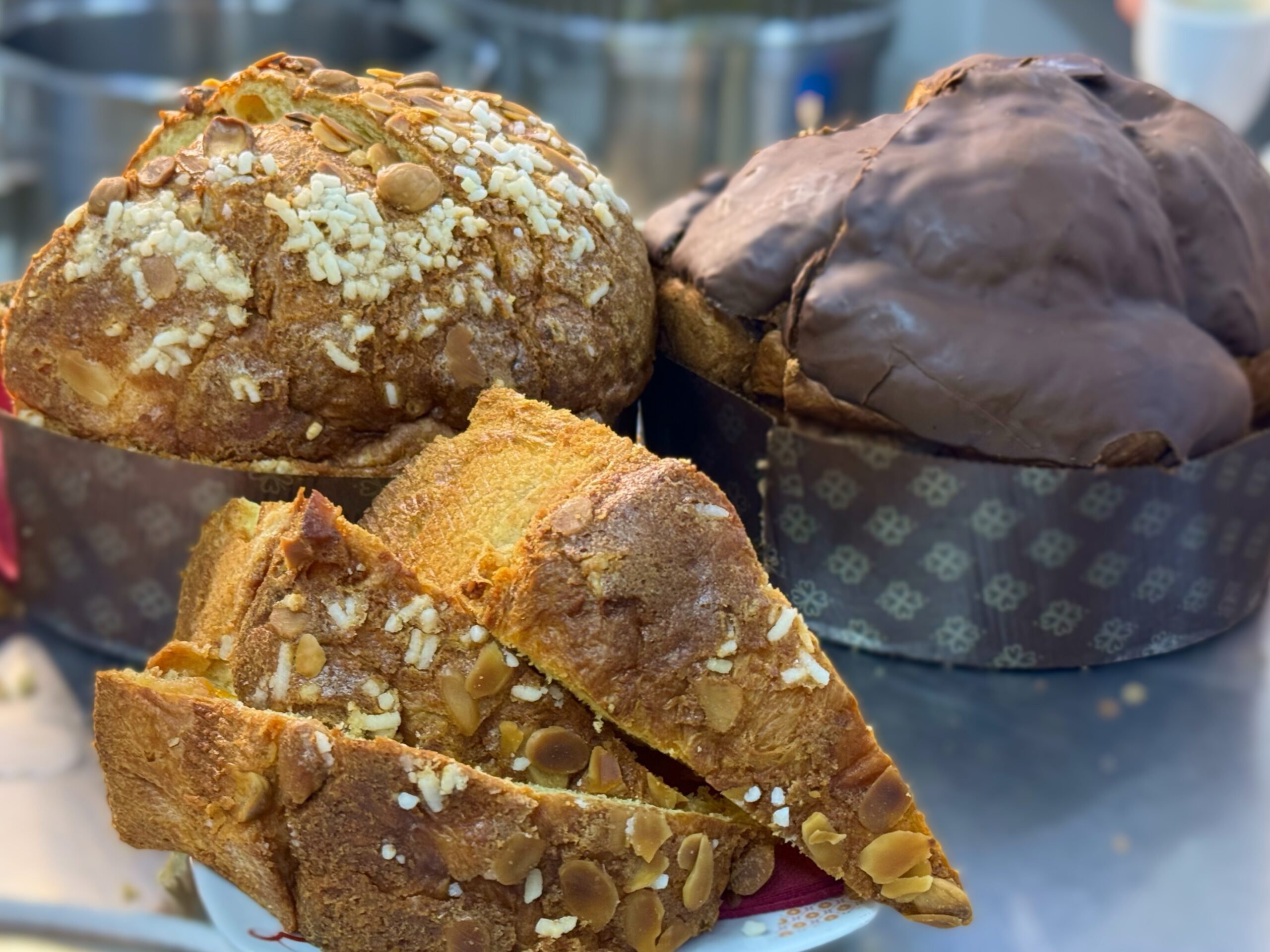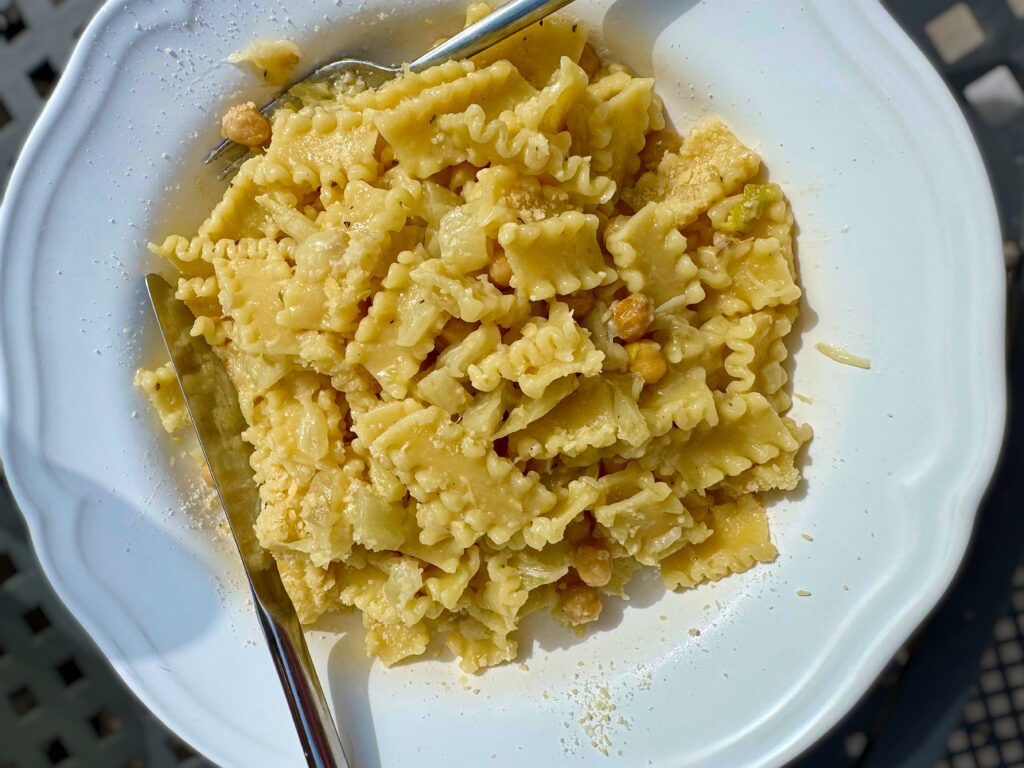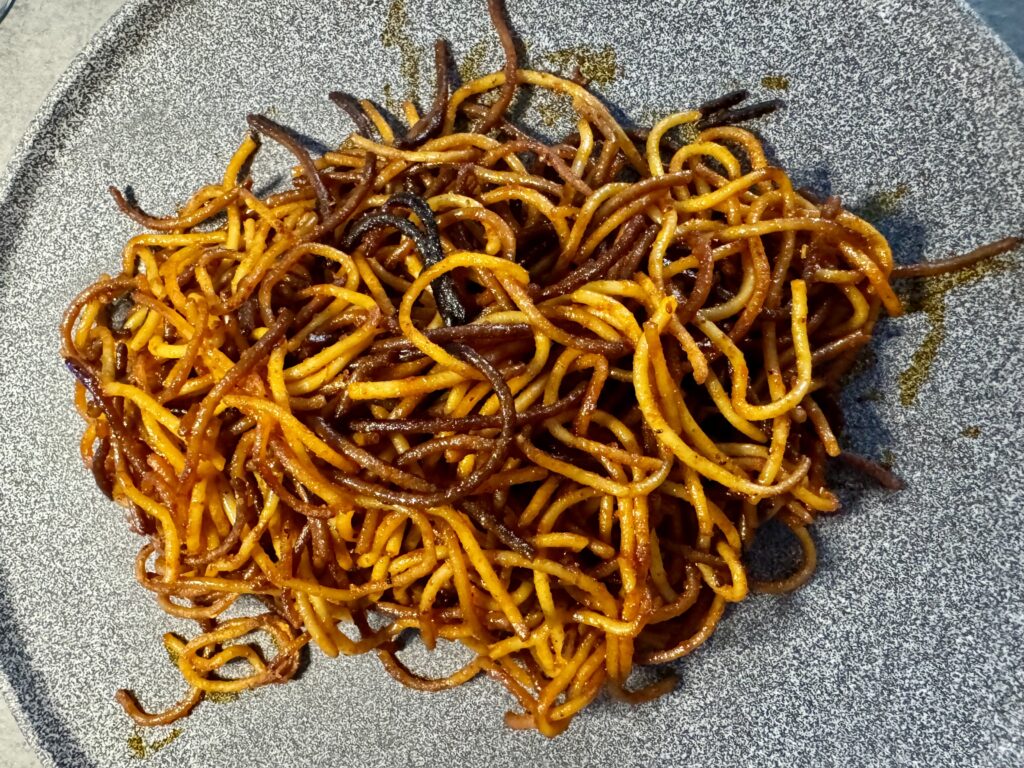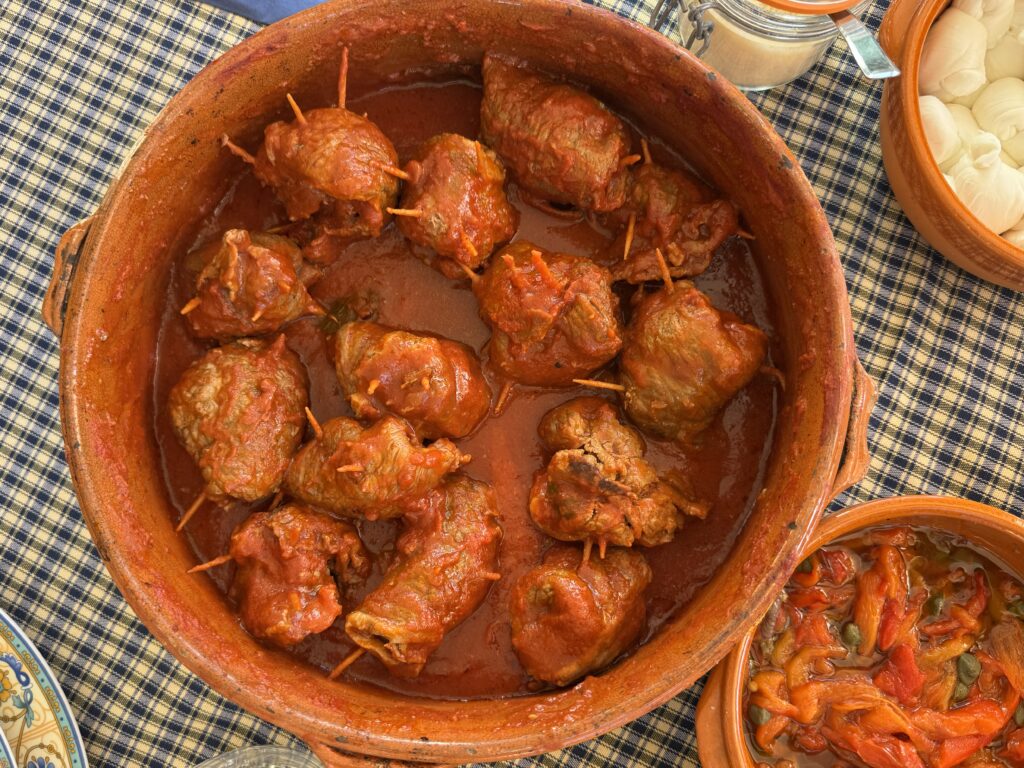As the festive season approaches, Italy comes alive with a unique Christmas tradition that has captured the hearts and taste buds of people around the world – Panettone. Originating from Milan, Panettone is an enriched bread traditionally made with candied fruits, orange and lemon peel. With its distinctive dome shape, golden color and light and fluffy texture, Panettone has become synonymous with the holiday season in Italy and beyond.
The Birth of Panettone – Mysterium Magnum:
Although its history can be traced back to Roman times, Panettone is first documented in the Middle Ages, with its roots firmly planted in northern Italy. As traditional as the rivalry between its great cities Milan and Turin, who both lay claim to it, the exact origins are shrouded in mystery. But, being a cherished part of Italian holiday traditions, Panettone is accompanied by several stories and legends that add a touch of seasonal magic to its creation.
The Love Story of Ughetto and Adalgisa:
The most widely known legend surrounding Panettone involves a young nobleman named Ughetto degli Atellani and his love for Adalgisa, the daughter of a poor Milanese baker named Toni. Ughetto wanted to win Adalgisa’s heart, so he disguised himself as a baker’s apprentice to be closer to her.
One day, while Toni was away, Ughetto experimented with the basic ingredients available in the bakery – flour, butter, eggs, and dried fruits. He created a sweet and aromatic bread that would later be recognized as the first Panettone. When Ughetto presented his creation to Adalgisa, it not only won her heart but also became a symbol of love and celebration for the entire community. The bread was named “Pan de Toni” in honor of the baker, and over time, it evolved into the beloved Panettone we know today.
The Baker’s Miracle:
Another legend tells the story of a humble baker in Milan who, on Christmas Eve, was devastated to discover that he had forgotten to prepare the traditional Christmas bread. Distraught, he prayed for a miracle. Suddenly, an angelic figure appeared in his bakery, guiding him to gather the available ingredients and create a sweet bread unlike any other.
With the angel’s guidance, the baker mixed flour, eggs, butter, and dried fruits, creating a dough that rose miraculously. The resulting bread was so delightful that the townspeople named it “Panettone,” signifying its miraculous origin. From that day forward, the humble baker’s miraculous creation became a symbol of hope, joy, and the Christmas spirit.
The Baker’s Offering:
In Turin, there’s a legend that suggests that Panettone originated as a generous gift from a poor baker to the Duke of Savoy. The Duke was visiting the baker’s shop, and the humble baker, wanting to create something special for his distinguished guest, combined the finest ingredients he had – flour, butter, eggs, and candied fruits – to create a sumptuous bread. The Duke was so impressed by the delightful taste that he declared it the official Christmas bread of the court, and thus, Panettone became a symbol of celebration and generosity.
These legends add a delightful layer of history and romance to the making of Panettone, turning it from a simple sweet bread into a magical and cherished part of Italian holiday folklore.
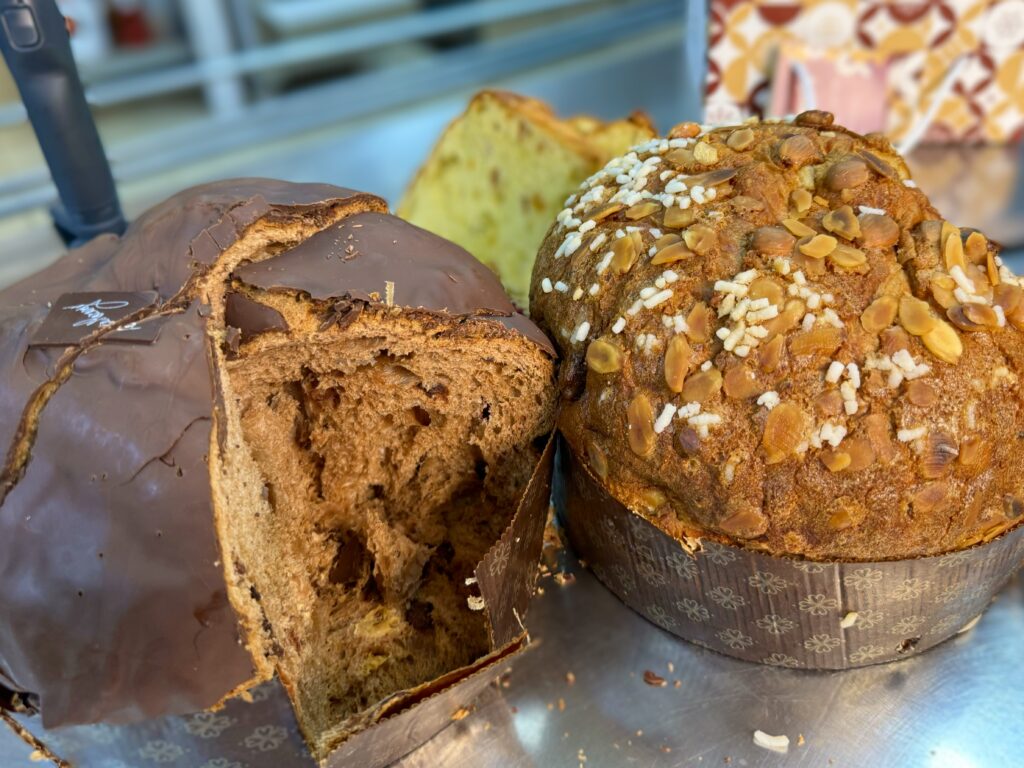
Milan vs. Turin: A Sweet Rivalry:
Myth and legend aside, the name Panettone is derived from “panetto” (a small loaf) with he addition of the suffix “one” denoting its larger size.
While Milan claims the original creation of Panettone, Turin has its own unique version known as “Pandoro” or “Golden Bread.” The rivalry between the two cities is a friendly one, with each city fervently claiming to have the superior Christmas bread. Milan’s Panettone is rich, filled with fruits, while Turin’s Pandoro is a plain, golden, star-shaped delight, dusted with powdered sugar.
Artisan Panettone: A Culinary Masterpiece:
Crafting the perfect Panettone is an art form that requires skill, patience, and high-quality ingredients. Artisan bakers meticulously follow traditional recipes, allowing the dough to ferment for hours, creating the signature light and fluffy texture. The incorporation of candied fruits, raisins and citrus peel adds a burst of flavor, making each slice a heavenly indulgence.
Panettone Beyond Italy: A Global Delicacy:
In recent years, Panettone has transcended its Italian origins, becoming a global Christmas delicacy. Artisanal bakeries worldwide have embraced the tradition, producing their own unique twists on this festive treat. Panettone’s popularity can be attributed to its versatility – it can be enjoyed on its own, toasted with butter, or even transformed into delightful desserts like bread pudding.
Bringing Panettone Home:
For those eager to savor the authentic taste of Italy, Panettone is readily available for purchase online and in specialty stores. Many Italian brands offer a variety of flavors, including classic fruit-filled, chocolate-studded, and even savory versions for those seeking a unique twist.
Here in Italy Panettone are now made in every region from north to south. As tastes and traditions change from region to region, so too does the classic Panettone recipe. Here in Puglia ours are glazed then topped with whole and flaked almonds and pearl sugar grains before baking. Our local artisan producer – perhaps in homage to its Roman origins as a leavened bread sweetened with honey – uses honey and vanilla. For those who shy away from candied fruits and peel, they also make a popular three chocolate version using plain, milk and white chocolate chunks in place of the fruits.
The Joy of Panettone:
Panettone is more than just a Christmas treat; it’s a symbol of tradition, love, and the joy of the holiday season. Whether you favor the Milanese or Turinese version, or perhaps a modern twist from an artisanal bakery, incorporating Panettone into your holiday festivities is a delightful way to experience the magic of an Italian Christmas, no matter where you are in the world. Indulge in the sweet tradition, and let the flavors of Panettone transport you to the festive streets of Milan or Turin. Buon Natale!
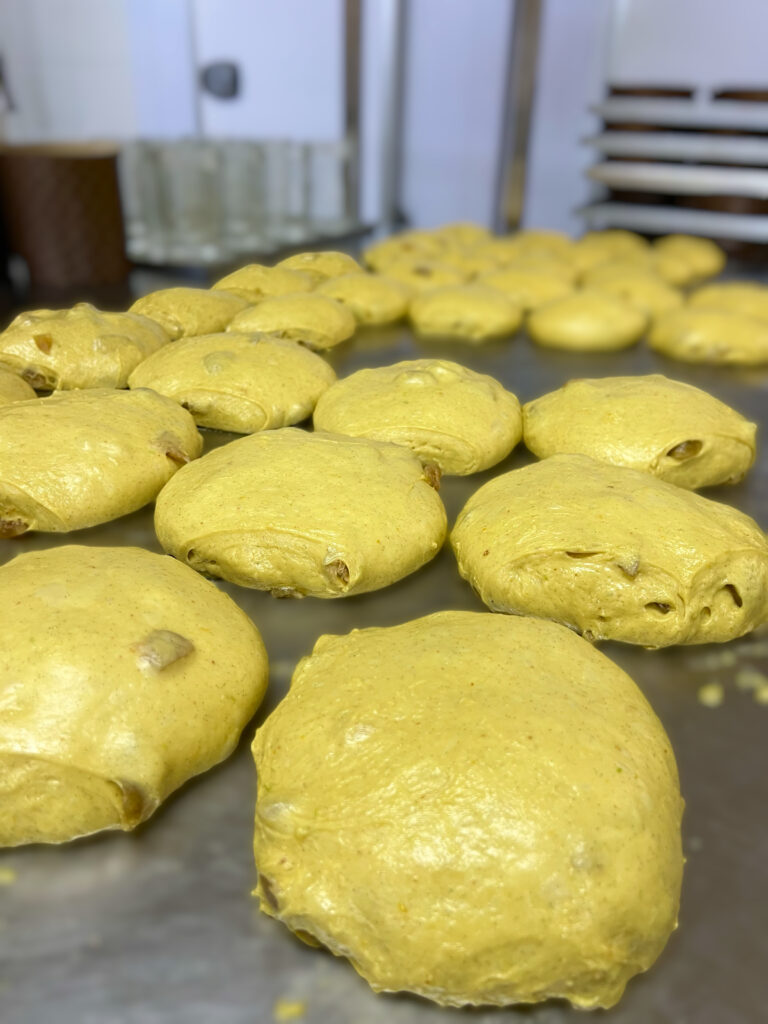
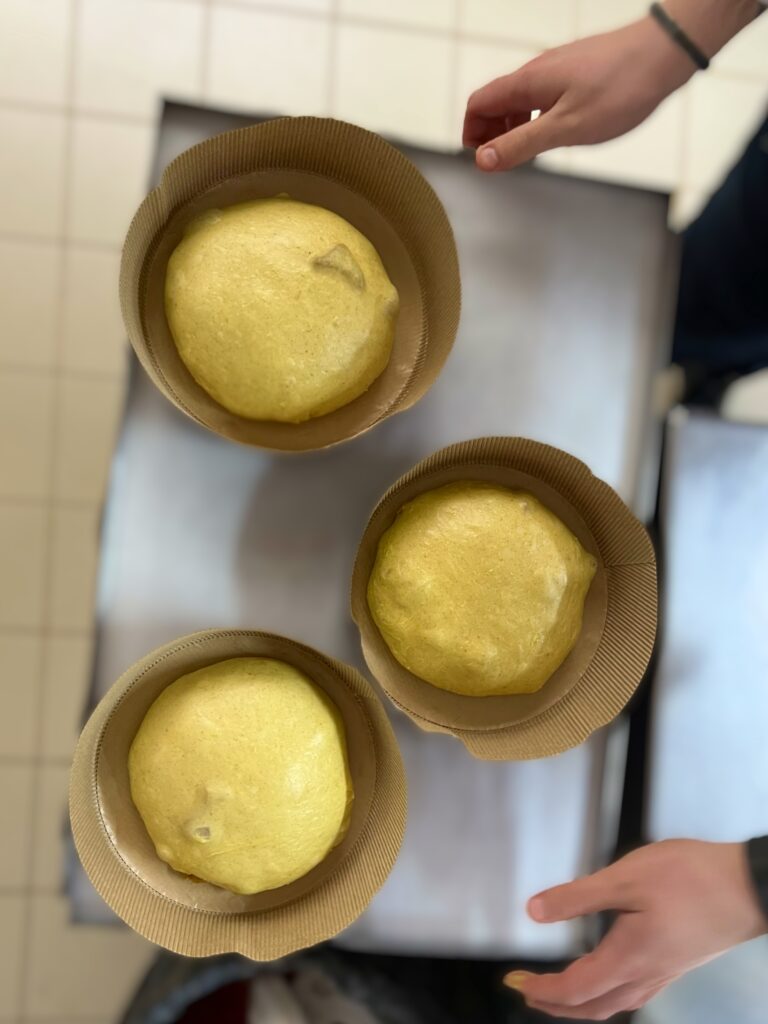
Crafting Panettone: A Tradition in the Making
The Traditional Recipe:
Panettone is a labor of love, requiring precision, patience, and a deep respect for tradition. The classic recipe involves a few key steps, ensuring the iconic fluffy texture and rich flavor that defines this Italian Christmas delight.
Artisan producers will let the dough rise three times, for up to 20 hours, before cooking, giving it its now-familiar light texture.
We buy our panettone from our local artisan pasticceria. They start making them in November – around 24 a day. But from Immacolata (the Feast of the Immaculate Conception celebrated on 8th December) production is stepped up to around 130 a day!
However, it can be made at home!
For this you will need:
- 4 cups all-purpose flour
- 1 cup sugar
- 4 large eggs
- 1 cup unsalted butter, softened
- 1 cup candied fruits (citrus peel, cherries, etc.)
- 1/2 cup raisins
- 1 cup whole milk
- 1 packet active dry yeast
- 1 teaspoon vanilla extract
- 1/2 teaspoon salt

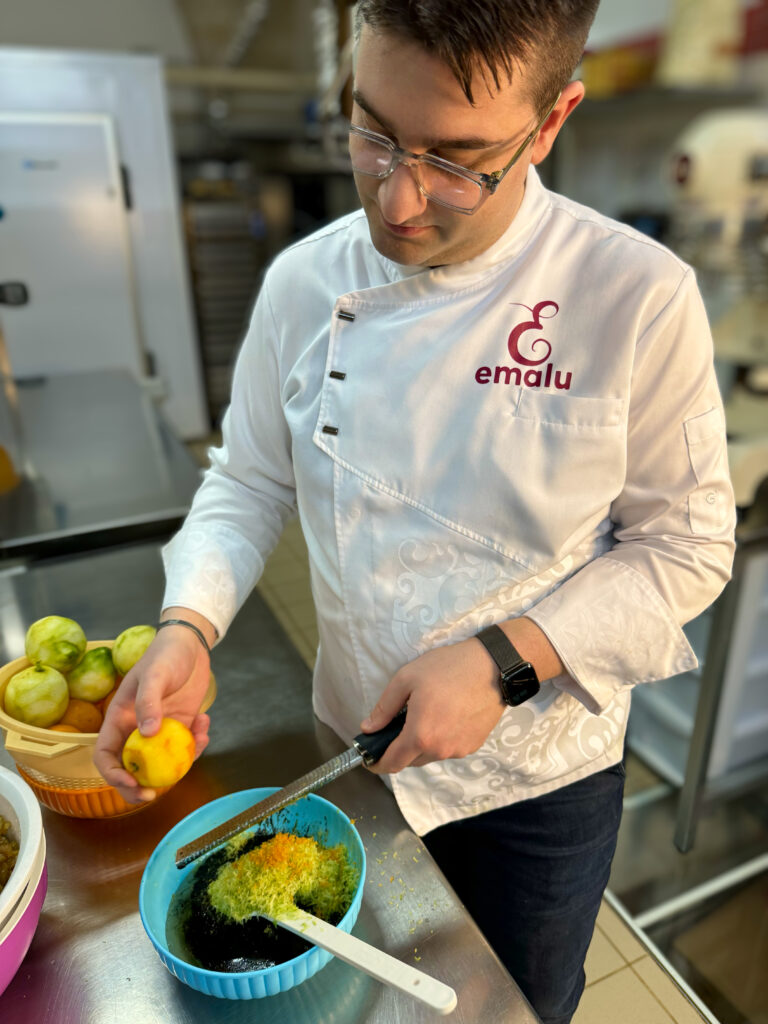
Step-by-Step Process:
1. Start the Yeast:
- Warm the milk to about 110°F (43°C), add a teaspoon of sugar, and dissolve the yeast. Let it sit for 5-10 minutes until it becomes frothy.
2. Mix the Dough:
- In a large bowl, combine the flour and sugar. Make a well in the center and add the eggs, softened butter, vanilla extract, and the activated yeast mixture. Mix until a sticky dough forms.
3. Knead and Rise:
- Turn the dough onto a floured surface and knead for about 10-15 minutes until smooth and elastic. Place the dough in a greased bowl, cover it with a damp cloth, and let it rise in a warm place for 2-3 hours or until it has doubled in size.
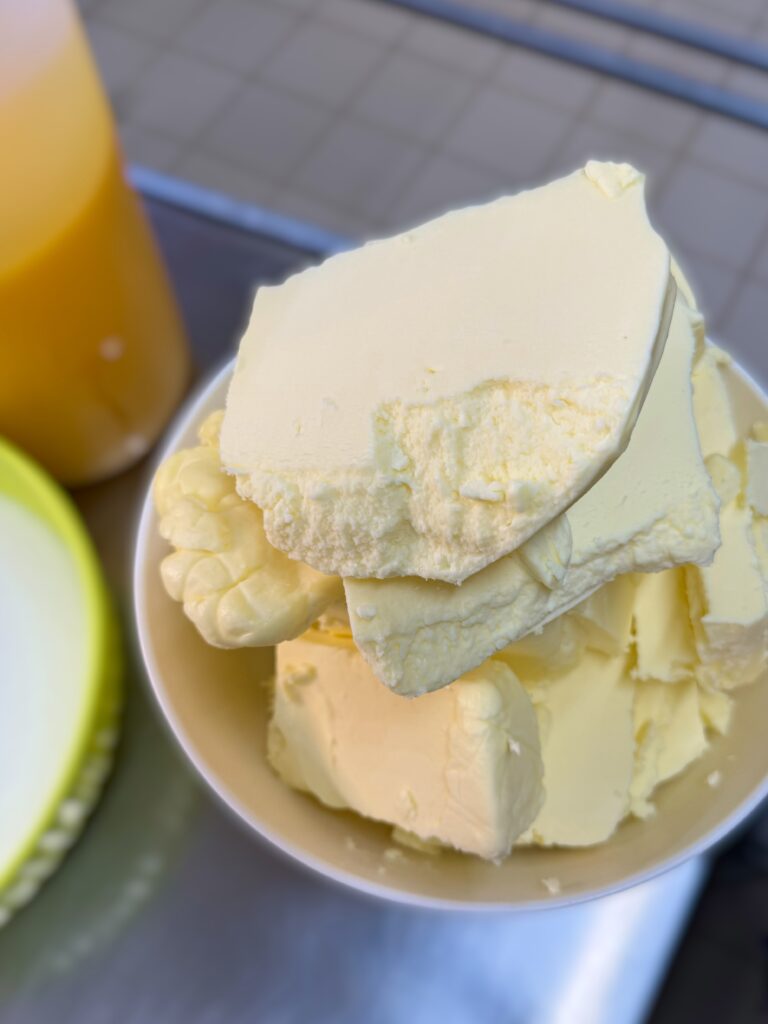
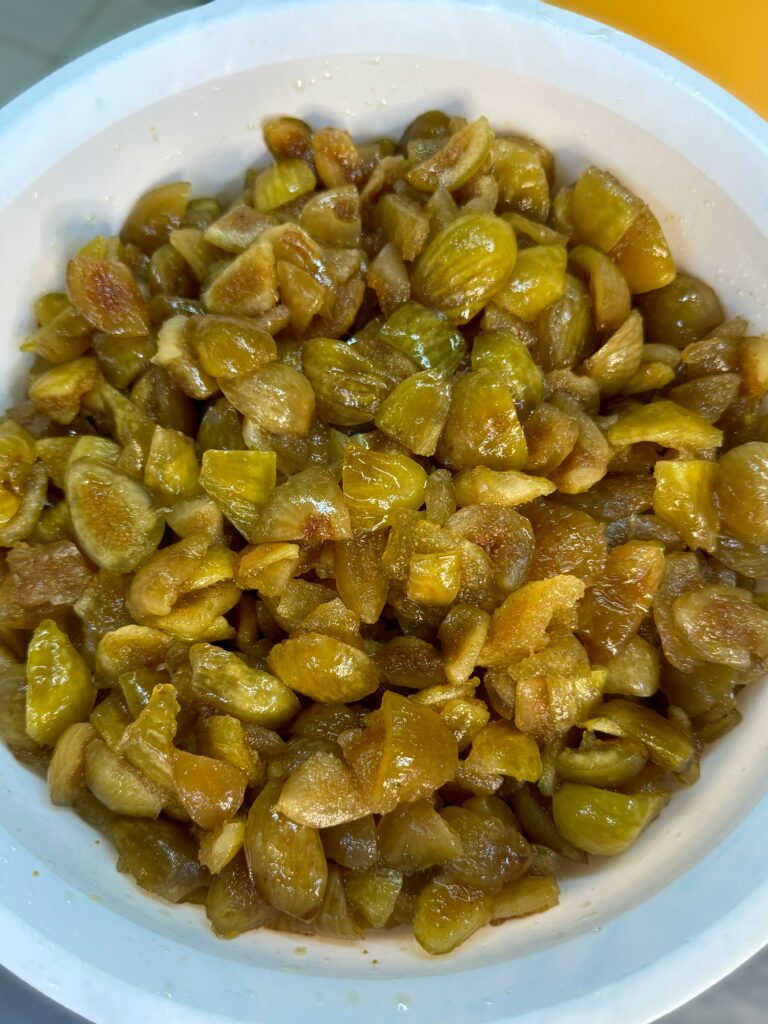
4. Add the Fruits:
- Once the dough has risen, gently fold in the candied fruits and raisins. Be careful not to deflate the dough too much.
5. Shape and Second Rise:
- Divide the dough into two portions and shape each into a round. Place them in Panettone molds or deep cake pans. Allow the dough to rise for another 2 hours.
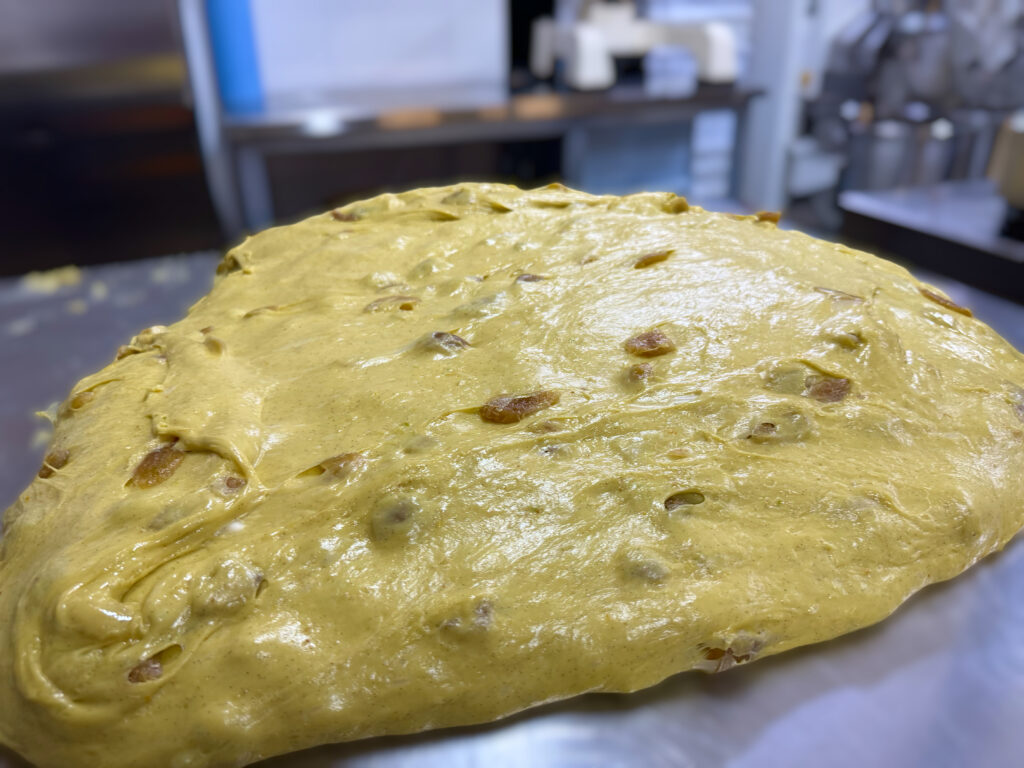
6. Preheat and Bake:
- Preheat your oven to 350°F (175°C). Before baking, slash a shallow X on top of each Panettone, place a small pat of butter in the center, and bake for 40-45 minutes or until golden brown and a toothpick comes out clean.
7. Cool and Enjoy:
- Allow the Panettone to cool completely before slicing. Traditionally, it’s enjoyed plain or lightly toasted with a dusting of powdered sugar.
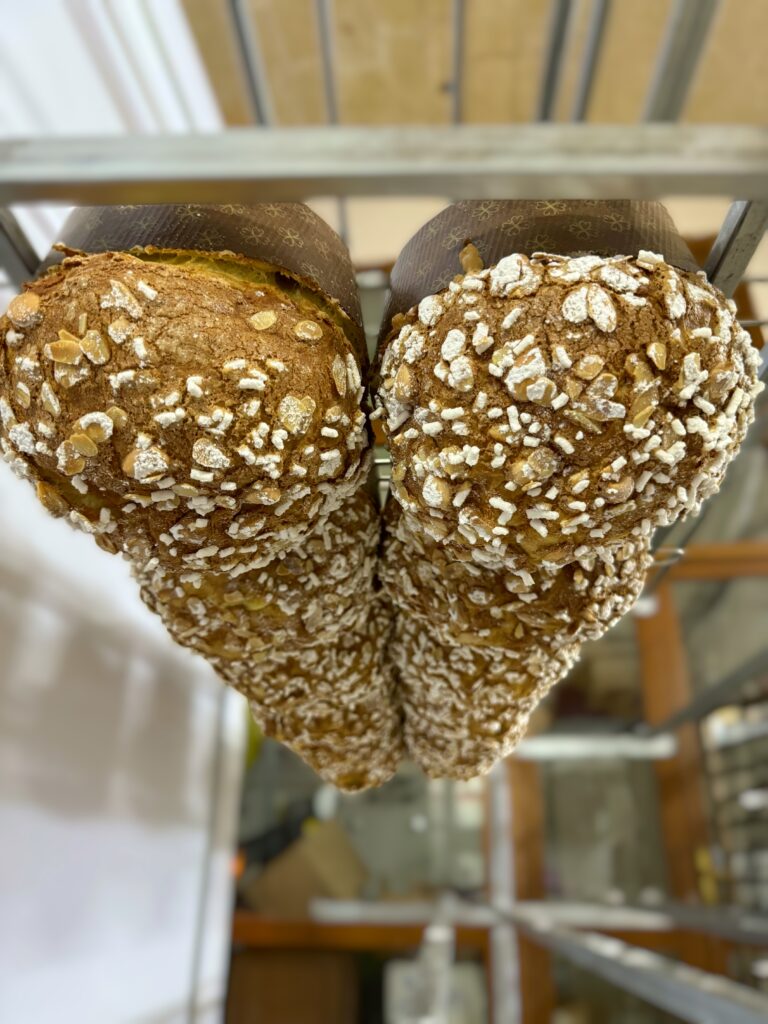
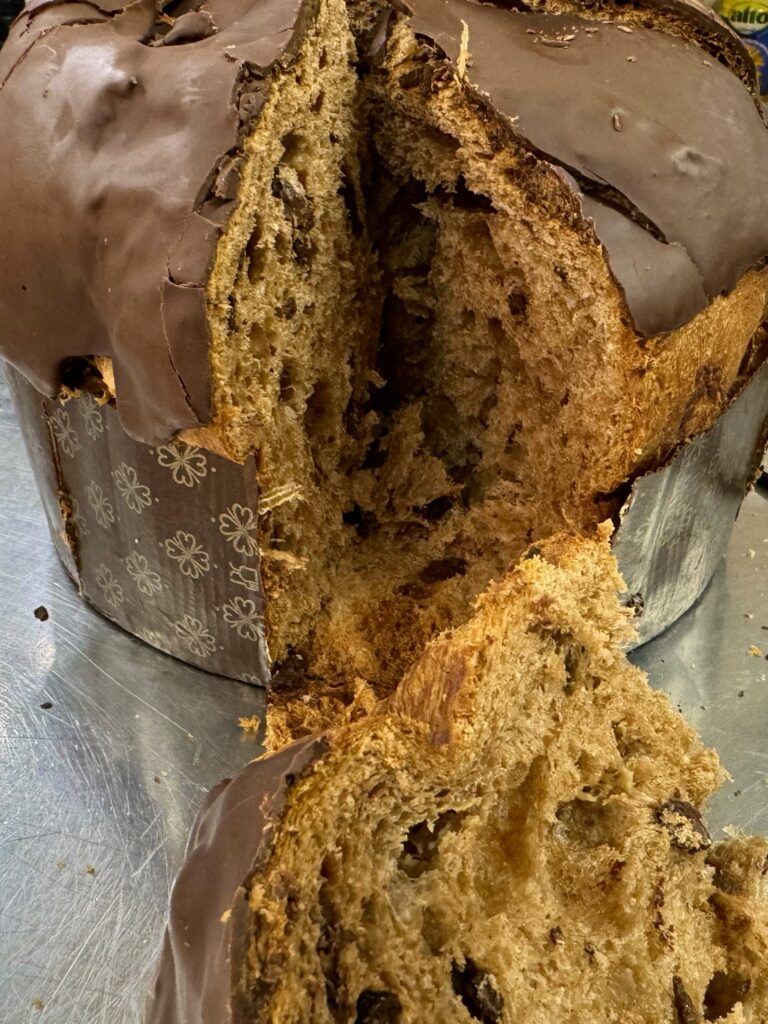
Tips for Success:
- Patience is Key: Allowing the dough to rise adequately is crucial for the light and airy texture.
- Quality Ingredients: Opt for high-quality candied fruits and raisins to enhance the flavor profile.
- Traditional Molds: While not mandatory, using Panettone molds helps the bread maintain its characteristic tall shape.
- Hang Upside Down to Cool: Once out of the oven push a couple of sterilised knitting needles of kebab skewers through the base so you can hand the panettone upside down to cool. This will ensure the panettone does not sink into itself!
By following this traditional Panettone recipe, you can bring the warmth and sweetness of Italian Christmas into your home, creating a festive atmosphere that transcends borders. Buon Appetito!

